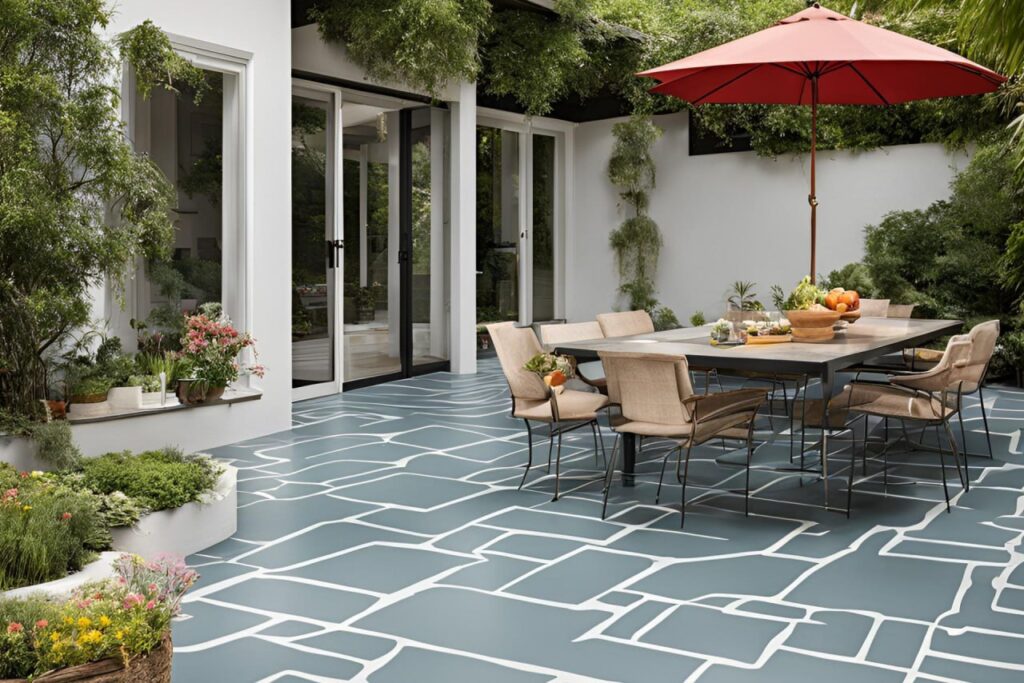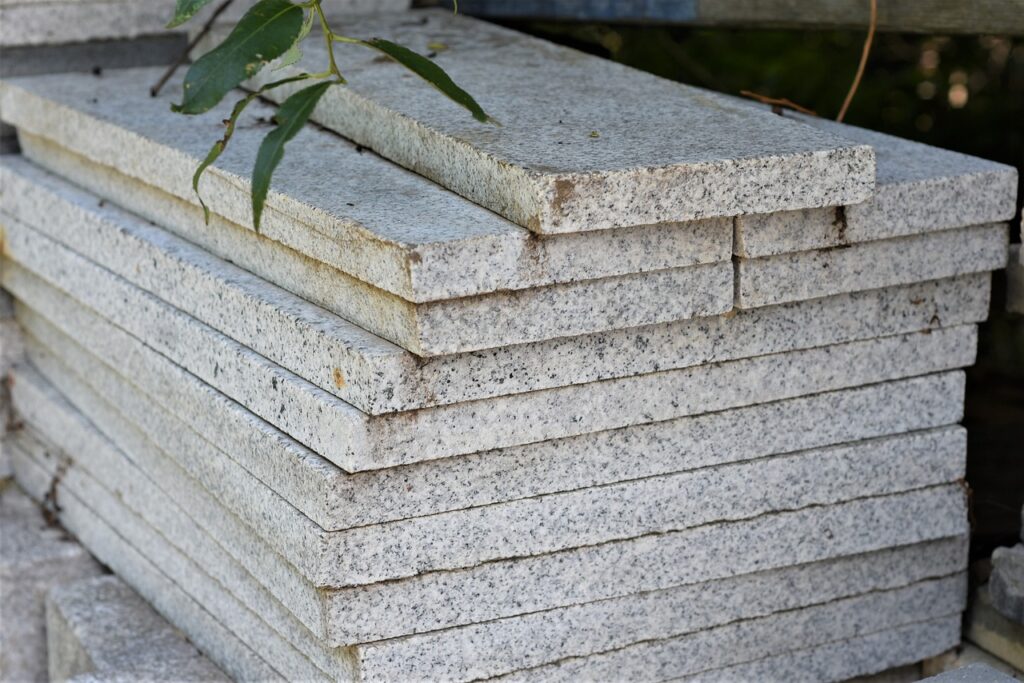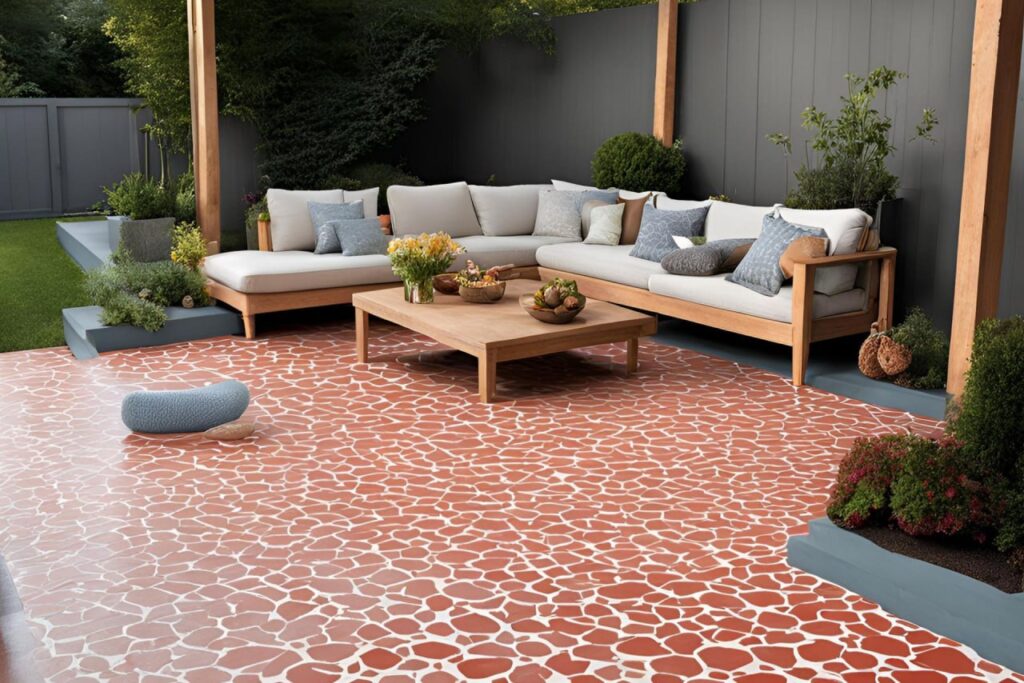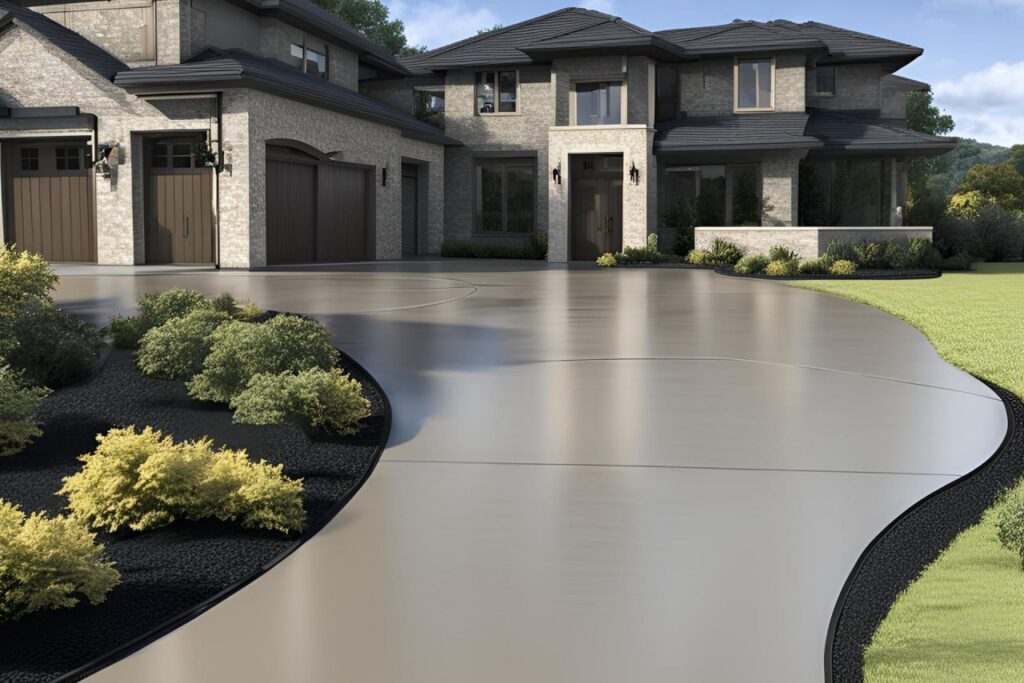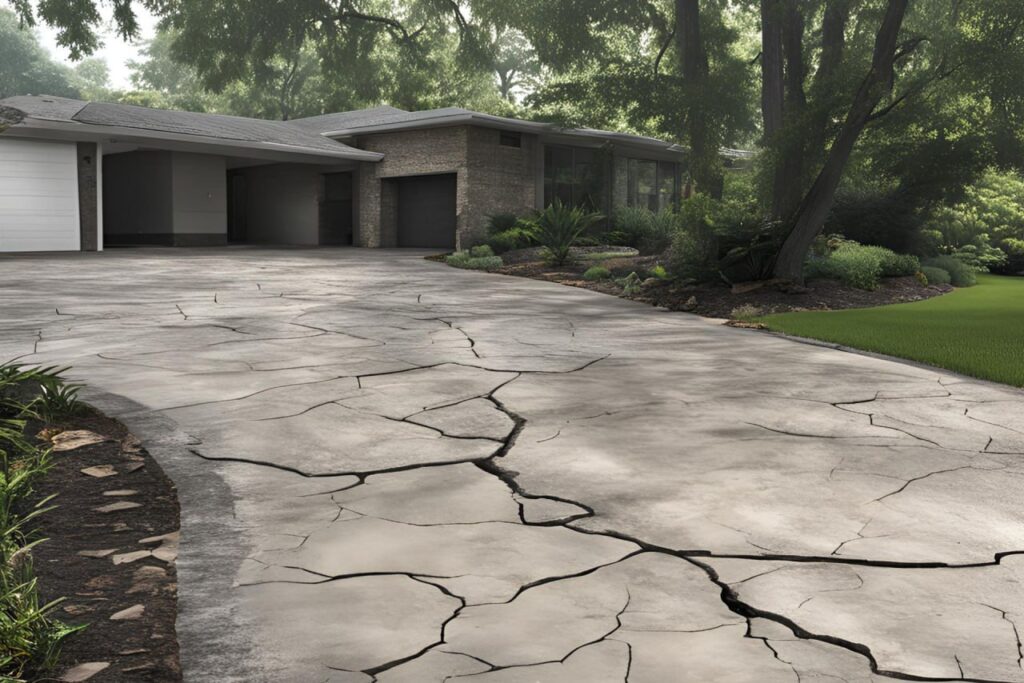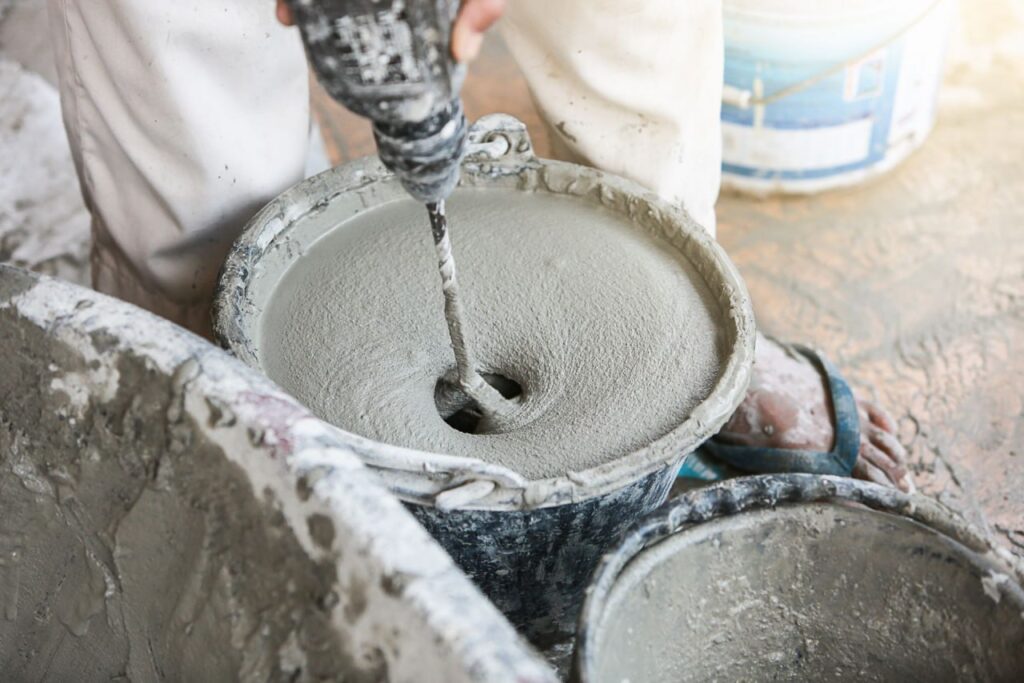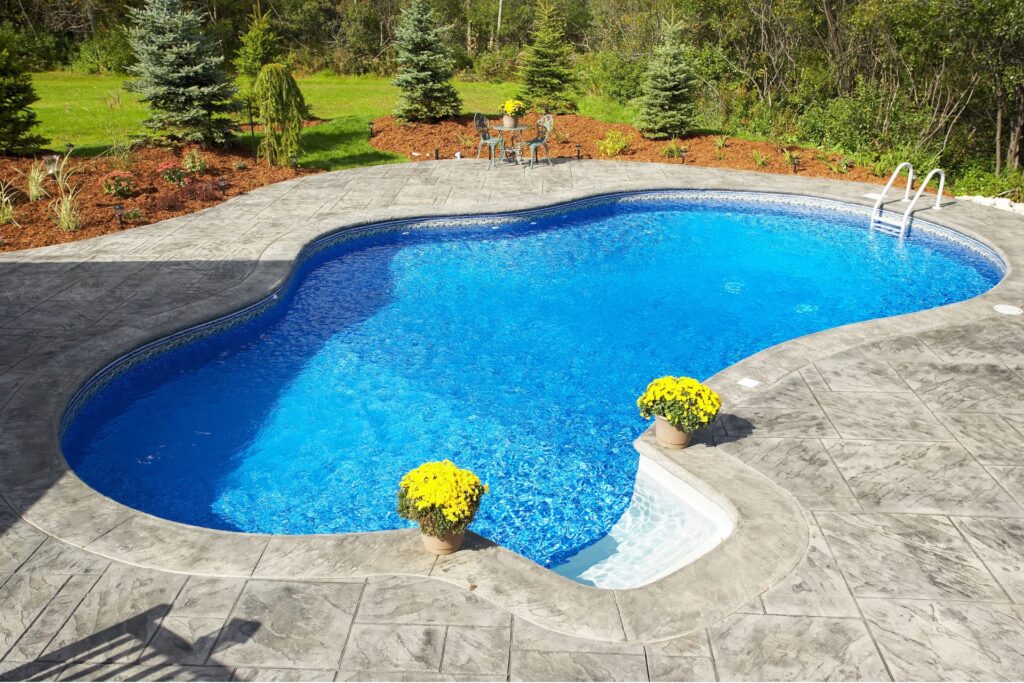Welcome to our comprehensive guide on understanding the longevity of painted concrete patios. Whether you’re looking to transform your outdoor space into a vibrant oasis or simply protect your concrete surfaces, painted patios offer a versatile solution. However, one common question homeowners ask is, “How long does a painted concrete patio last?” In this post, we will explore the factors that influence the lifespan of a painted concrete patio, including the quality of paint, surface preparation, environmental conditions, and maintenance practices. By the end, you’ll have a clear understanding of what to expect and how to maximize the durability of your painted patio, ensuring it remains beautiful and functional for years to come.
A painted concrete patio can last anywhere from 5 to 10 years, depending on factors such as the quality of the paint, proper surface preparation, application techniques, and environmental conditions. Regular maintenance, including cleaning and occasional touch-ups, can extend the lifespan of the painted surface, keeping your patio looking vibrant and well-protected for many years.
- Understanding Painted Concrete Patios
- Factors Influencing The Longevity Of Painted Concrete Patios
- Expected Lifespan Of Painted Concrete Patios
- Maintenance Tips To Extend The Lifespan Of Your Painted Concrete Patio
- Case Studies And Real-Life Examples
- FAQs: About How Long Does A Painted Concrete Patio Last
- Conclusion
- Find A Professional Concrete Company Near You!
Understanding Painted Concrete Patios
Definition and Purpose
What is a Painted Concrete Patio
A painted concrete patio is a concrete outdoor area that has been coated with a layer of paint specifically designed for concrete surfaces. This paint not only adds color but also offers protection against various elements. Concrete patios are popular due to their durability and versatility, and painting them can enhance their visual appeal significantly.
Benefits of Painting a Concrete Patio
1. Enhanced Aesthetics: Painting a concrete patio can transform a dull, gray slab into a vibrant and attractive outdoor space. With a wide range of colors and finishes available, homeowners can match the patio with their overall landscape design or home’s exterior.
2. Protection Against Wear and Tear: Concrete is durable, but it is not invincible. Over time, exposure to sun, rain, and foot traffic can cause it to crack and degrade. Paint acts as a protective barrier, shielding the concrete from these elements and extending its lifespan.
3. Easy Maintenance: A painted concrete patio is easier to clean and maintain. The paint can prevent stains from penetrating the concrete, making spills and dirt easier to wash away with just soap and water.
4. Cost-Effective Upgrade: Instead of replacing an old, worn-out patio, painting it can be a more affordable option. It provides a fresh look without the need for expensive renovations.
Common Uses
Enhancing Aesthetics
One of the primary reasons homeowners opt to paint their concrete patios is to improve the visual appeal of their outdoor spaces. Painted patios can complement various design themes, from modern and minimalist to rustic and traditional. The choice of colors and patterns can create a cohesive look that enhances the overall ambiance of a home.
1. Customization: Homeowners can choose from a variety of colors and designs, including faux finishes that mimic the appearance of more expensive materials like stone or tile.
2. Curb Appeal: A well-maintained and attractive patio can boost the curb appeal of a home, making it more inviting and potentially increasing its market value.
3. Thematic Consistency: For those who enjoy outdoor living spaces, a painted patio can tie together different elements of the landscape, such as garden beds, outdoor furniture, and decorative features, creating a harmonious and visually appealing environment.
Protecting the Concrete Surface
Painting a concrete patio not only beautifies it but also serves a functional purpose by protecting the surface from damage.
1. Weather Resistance: Concrete is porous and can absorb water, which leads to cracking during freeze-thaw cycles. Paint seals the surface, preventing moisture from seeping in and causing damage.
2. UV Protection: Constant exposure to sunlight can cause concrete to fade and weaken over time. Paint with UV-resistant properties can shield the surface from harmful rays, preserving its integrity and appearance.
3. Preventing Mold and Mildew: Painted surfaces are less likely to harbor mold and mildew, which can be a common issue in damp or shaded areas. This protection is particularly beneficial for patios in regions with high humidity.
By understanding the definition, purpose, and common uses of painted concrete patios, homeowners can make informed decisions about enhancing and protecting their outdoor spaces. Whether for aesthetic reasons or practical benefits, painting a concrete patio is a valuable investment in the longevity and beauty of a home’s exterior.
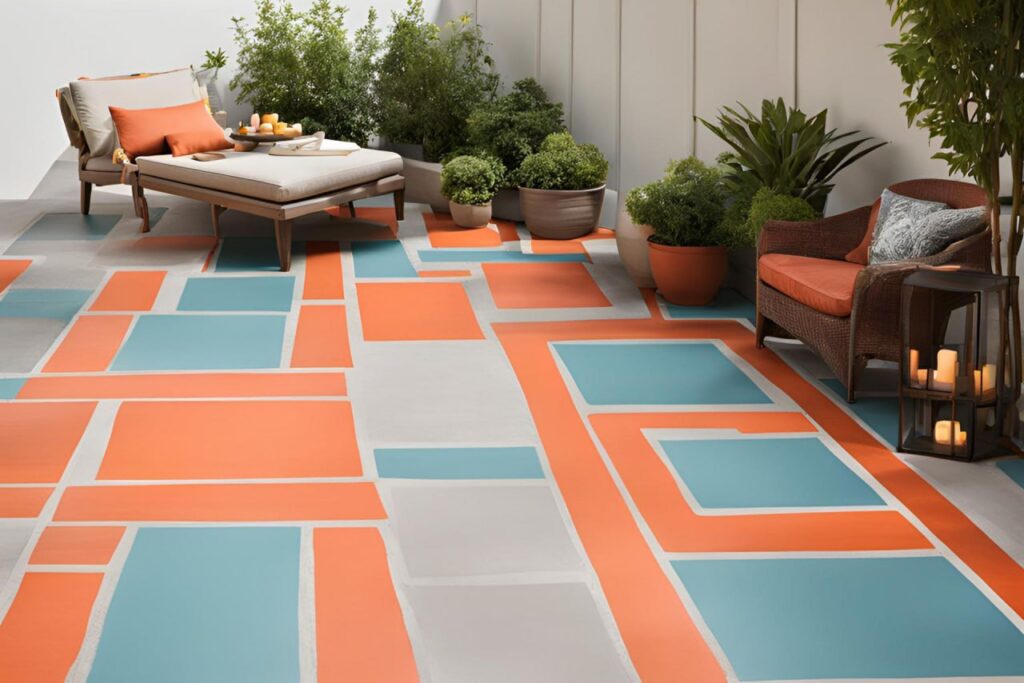
Factors Influencing The Longevity Of Painted Concrete Patios
When it comes to extending the life of your painted concrete patio, several key factors come into play. These factors range from the quality of the paint used to the environmental conditions your patio is exposed to. By understanding and addressing these elements, you can ensure your patio remains attractive and durable for years to come. Here, we’ll delve into the specifics of each factor and how they contribute to the longevity of a painted concrete patio.
Quality of Paint
Types of Paint Suitable for Concrete (Acrylic, Epoxy, etc.)
Choosing the right type of paint is crucial for the durability of your concrete patio. Acrylic and epoxy paints are among the most popular options. Acrylic paint is water-based, easy to apply, and offers good UV resistance, making it ideal for outdoor use. Epoxy paint, on the other hand, is known for its superior adhesion and durability, making it a great choice for high-traffic areas.
Importance of Choosing High-Quality Paint
Not all paints are created equal. Investing in high-quality paint can make a significant difference in the longevity of your patio. High-quality paints often contain better pigments and resins, which enhance their durability and resistance to weathering. They also provide a more consistent finish and better color retention, ensuring your patio looks great for longer.
Surface Preparation
Steps for Proper Surface Preparation
Proper surface preparation is essential for ensuring the paint adheres well and lasts longer. Here are the key steps
1. Cleaning: Thoroughly clean the concrete surface to remove dirt, grease, and any existing paint. This can be done using a pressure washer or a stiff brush and cleaning solution.
2. Repairing Cracks: Inspect the surface for any cracks or holes and fill them with a suitable concrete patching compound.
3. Priming: Apply a concrete primer to create a smooth, uniform surface that enhances the adhesion of the paint.
How Poor Preparation Can Affect Longevity
Skipping or inadequately performing these preparation steps can lead to several issues. Poor surface preparation can result in the paint peeling, flaking, or bubbling over time. It also reduces the paint’s ability to resist wear and weathering, significantly shortening the lifespan of your painted patio.
Application Technique
Best Practices for Applying Paint to Concrete
Applying paint to concrete requires specific techniques to ensure a durable finish
Use a Roller or Sprayer: For an even coat, use a roller or a sprayer. Rollers are great for smaller areas, while sprayers can cover large surfaces quickly.
Multiple Thin Coats: Apply multiple thin coats rather than one thick coat. This helps the paint adhere better and prevents drips and uneven coverage.
Allow Adequate Drying Time: Ensure each coat dries completely before applying the next. This prevents the paint from becoming tacky and ensures a strong bond.
Common Mistakes to Avoid
Avoid common mistakes such as applying paint in extreme temperatures, skipping the primer, or using the wrong type of paint. These errors can compromise the finish and durability of your painted patio.
Environmental Factors
Impact of Weather Conditions
Weather conditions play a significant role in the longevity of painted concrete patios. Sun exposure can cause paint to fade and deteriorate over time, while rain and humidity can lead to moisture buildup, causing the paint to peel. Temperature fluctuations can cause the concrete to expand and contract, leading to cracks and paint damage.
Effect of Geographical Location
Your geographical location can also influence how your painted patio holds up. Areas with extreme weather conditions, such as intense heat or heavy snowfall, require more durable paint and regular maintenance to ensure longevity.
Foot Traffic and Usage
How Usage Intensity Affects the Lifespan
The amount of foot traffic your patio receives directly impacts the durability of the paint. High-traffic areas are more prone to wear and tear, leading to faster degradation of the paint. Consider using more durable paint options, such as epoxy, in these areas.
Recommendations for High-Traffic Areas
For patios that see a lot of use, it’s advisable to apply a protective sealant over the paint. This adds an extra layer of protection against abrasion and extends the life of the paint. Additionally, regular maintenance, such as cleaning and touch-ups, can help keep your patio looking fresh and prolong its lifespan.
By paying attention to these factors—the quality of paint, surface preparation, application technique, environmental conditions, and usage intensity—you can significantly enhance the longevity of your painted concrete patio. Investing time and effort in these areas will ensure your patio remains a beautiful and functional part of your outdoor space for many years.
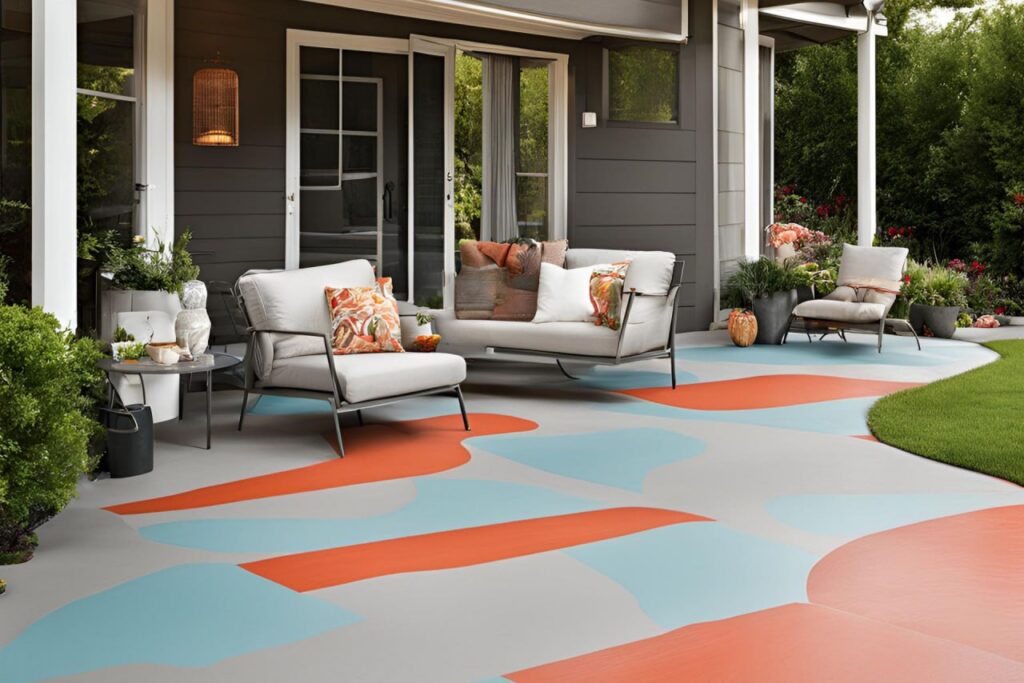
Expected Lifespan Of Painted Concrete Patios
General Lifespan Estimates
When considering the longevity of a painted concrete patio, it’s essential to understand that several factors can influence its lifespan. On average, you can expect a well-maintained painted concrete patio to last between 5 to 10 years. This estimate can vary significantly based on the quality of the paint used, the application process, and the environmental conditions the patio is exposed to.
For instance, a patio in a region with mild weather and minimal exposure to harsh sunlight or heavy rainfall will generally last longer than one subjected to extreme weather conditions. Proper surface preparation before painting and regular maintenance, such as cleaning and touch-ups, can also extend the lifespan of a painted concrete patio.
Comparisons with Other Surface Treatments
To understand the durability of painted concrete patios better, it’s helpful to compare them with other common surface treatments like stained and sealed concrete.
Painted Concrete vs. Stained Concrete
Stained concrete offers a more permanent color solution compared to painted concrete. Since the stain penetrates the concrete surface, it tends to last longer, often upwards of 15-20 years with proper care. Stained concrete is less likely to chip or peel as it becomes part of the concrete, providing a more durable finish. However, it offers limited color options compared to paint.
Painted Concrete vs. Sealed Concrete
Sealed concrete, like stained concrete, can offer a longer-lasting solution than paint. Sealing involves applying a protective layer over the concrete, which can help protect against moisture, stains, and wear. A sealed concrete patio can last around 10-20 years, depending on the type of sealer used and the level of exposure to the elements. Sealed concrete also tends to require less frequent maintenance compared to painted concrete.
In conclusion, while painted concrete patios provide a cost-effective and versatile option for enhancing outdoor spaces, their lifespan tends to be shorter compared to stained or sealed concrete. Regular maintenance and proper initial application are crucial to maximizing the longevity of a painted concrete patio.
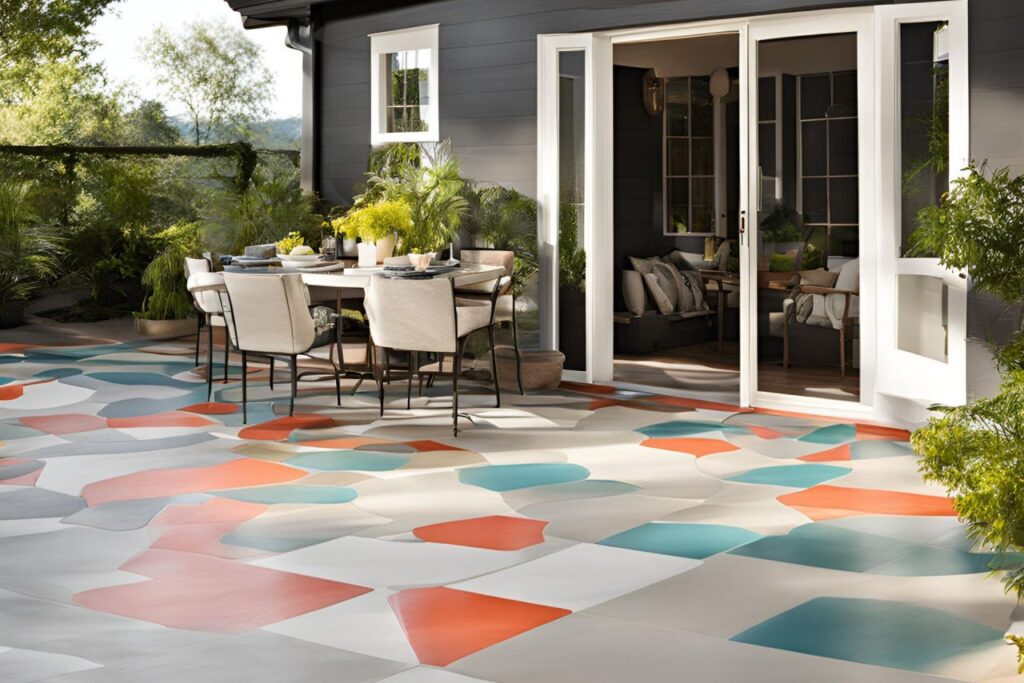
Maintenance Tips To Extend The Lifespan Of Your Painted Concrete Patio
Proper maintenance of your painted concrete patio is essential to keep it looking vibrant and ensure its longevity. Here are some expert tips on how to care for your patio:
Regular Cleaning
How to Properly Clean a Painted Concrete Patio
Regular cleaning is crucial to maintain the beauty of your painted concrete patio. Begin by sweeping the surface to remove loose dirt and debris. Next, mix a mild detergent with water in a bucket. Using a soft-bristle brush or mop, gently scrub the patio, focusing on stained areas. Rinse thoroughly with a garden hose, ensuring all soap residue is removed. For stubborn stains, a mixture of water and white vinegar can be effective.
Recommended Cleaning Products
Mild Detergents: Simple Green All-Purpose Cleaner is a good choice as it’s gentle on painted surfaces.
Vinegar Solutions: A solution of one part white vinegar to one part water can help tackle tough stains.
Soft-Bristle Brushes: Use brushes with soft bristles to avoid scratching the painted surface.
Preventive Measures
Protecting the Surface from Heavy Furniture and Sharp Objects
Prevent damage to your painted concrete patio by placing pads under the legs of heavy furniture. Avoid dragging furniture or other heavy objects across the surface, as this can scratch and chip the paint.
Using Outdoor Rugs and Mats
Strategically placing outdoor rugs and mats in high-traffic areas or under furniture can provide an additional layer of protection. Not only do these rugs add aesthetic appeal, but they also prevent dirt and debris from being ground into the surface.
Touch-Ups and Repainting
When and How to Perform Touch-Ups
Inspect your patio regularly for any chips, cracks, or fading. Small touch-ups can be done by cleaning the area, sanding lightly to create a smooth surface, and applying matching paint with a small brush. This prevents minor imperfections from becoming major issues.
Signs That It’s Time for a Full Repaint
Over time, even the best-maintained patios will show signs of wear. If you notice extensive fading, large areas of chipped or peeling paint, or if the color no longer looks vibrant, it might be time for a complete repaint. Repainting every few years can rejuvenate your patio and maintain its fresh appearance.
Protective Sealants
Benefits of Applying a Sealant Over the Paint
Applying a sealant over your painted patio adds an extra layer of protection against weather, UV rays, and everyday wear and tear. Sealants help prevent water damage, reduce fading, and make cleaning easier by providing a smooth, non-porous surface.
Types of Sealants and Application Tips
Acrylic Sealers: These are popular for their ease of application and quick drying times. They provide a clear, glossy finish that enhances the paint’s color.
Polyurethane Sealers: These offer superior durability and are ideal for high-traffic areas. They are more resistant to chemicals and abrasion.
Application Tips: Always ensure the surface is clean and dry before applying the sealant. Use a roller or sprayer for even coverage, and follow the manufacturer’s instructions regarding drying times and the number of coats needed.
By following these maintenance tips, you can keep your painted concrete patio looking stunning for years to come. Regular cleaning, preventive measures, timely touch-ups, and protective sealants are key to preserving its beauty and functionality.
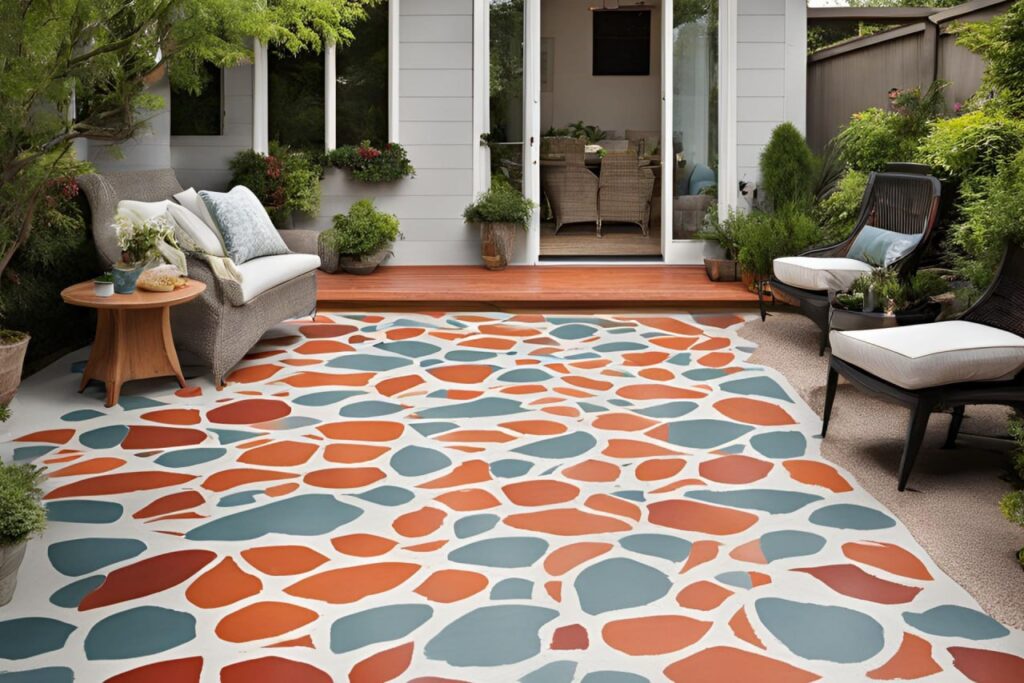
Case Studies And Real-Life Examples
Homeowner Testimonials
One of the most compelling ways to understand the durability and effectiveness of painted concrete patios is by hearing directly from homeowners who have experienced it firsthand. These real stories not only provide valuable insights but also help potential customers feel more confident about their choices.
Real Stories of Longevity
Many homeowners have found that their painted concrete patios stand the test of time. For instance, Jane from Auckland shared her experience of having her patio painted eight years ago. Despite the heavy foot traffic and exposure to various weather conditions, her patio still looks vibrant and fresh. Jane attributes this to the high-quality paint and the thorough preparation done before painting.
Lessons Learned and Advice
Homeowners like John from Wellington offer practical advice for those considering painting their concrete patios. John emphasizes the importance of proper surface preparation. He learned the hard way that skipping steps like cleaning and etching the concrete can lead to peeling paint. Now, he advises others to take the time to prepare their surfaces meticulously and choose paints specifically designed for outdoor concrete surfaces.
Another homeowner, Sarah from Christchurch, recommends reapplying a sealer every couple of years to maintain the paint’s integrity and appearance. She noticed that this small step significantly prolongs the life of the paint, making her patio look new for longer.
Expert Opinions
Professionals in the field provide invaluable insights into the best practices for painting concrete patios. These experts have years of experience and have seen firsthand what works and what doesn’t.
Insights from Professionals
James, a professional painter with over 20 years of experience in Hamilton, stresses the importance of selecting the right type of paint. He recommends using epoxy-based paints for concrete patios due to their superior durability and resistance to wear and tear. James also advises against painting during extremely hot or cold weather, as these conditions can affect the paint’s adhesion and curing process.
Recommendations for Best Practices
For those new to painting concrete patios, experts suggest starting with a primer designed for concrete surfaces. This ensures that the paint adheres properly and lasts longer. Additionally, using a high-quality roller or sprayer can make the application process smoother and more efficient, resulting in a more even and attractive finish.
Professionals like Lisa, a concrete specialist from Tauranga, also recommend incorporating anti-slip additives into the paint, especially for areas that might get wet. This not only enhances safety but also adds a subtle texture to the surface, making it more visually appealing.
In conclusion, whether through the experiences of homeowners or the advice of seasoned professionals, understanding the nuances of painting concrete patios can significantly enhance their longevity and appearance. These case studies and expert opinions provide a comprehensive guide for anyone looking to embark on this home improvement project, ensuring they achieve the best possible results.

FAQs: About How Long Does A Painted Concrete Patio Last
Conclusion
In conclusion, the longevity of your construction project hinges on several key factors, such as the choice of materials, environmental conditions, and regular maintenance. By investing in high-quality materials and committing to proper upkeep, you can ensure the durability and resilience of your structure. Remember, the effort you put into these aspects will pay off in the long run, saving you from costly repairs and replacements. We invite you to share your experiences and insights in the comments below, as your input can be invaluable to others embarking on similar projects. For personalized advice tailored to your specific needs, consider consulting with a professional who can provide expert guidance and support.
Find A Professional Concrete Company Near You!
- Christchurch Concrete Services
- Concrete Contractors Nelson
- Concrete Contractors Tauranga
- Concrete Dannevirke
- Concrete Driveways Lower Hutt
- Concrete Driveways Upper Hutt
- Concrete Foundations Kapiti
- Concrete Layers Auckland
- Concrete Layers Cambridge
- Concrete Layers Hamilton
- Concrete Layers Invercargill
- Concrete Layers Kapiti
- Concrete Layers Leigh
- Concrete Layers Levin
- Concrete Layers Mangawhai
- Concrete Layers Matakana
- Concrete Layers Northland
- Concrete Layers Orewa
- Concrete Layers Palmerston North
- Concrete Layers Pukekohe
- Concrete Layers Rodney
- Concrete Layers Silverdale
- Concrete Layers Te Awamutu
- Concrete Layers Upper Hutt
- Concrete Layers Waikato
- Concrete Layers Warkworth
- Concrete Layers Wellington
- Concrete Layers Wellsford
- Concrete Manuwatu
- Concrete Services Rotorua
- Concrete Whangarei
- Hastings Concrete Company
- Hawkes Bay Concrete Company
- Napier Concrete Company
About the Author:
Mike Veail is a recognized digital marketing expert with over 6 years of experience in helping tradespeople and small businesses thrive online. A former quantity surveyor, Mike combines deep industry knowledge with hands-on expertise in SEO and Google Ads. His marketing strategies are tailored to the specific needs of the trades sector, helping businesses increase visibility and generate more leads through proven, ethical methods.
Mike has successfully partnered with numerous companies, establishing a track record of delivering measurable results. His work has been featured across various platforms that showcase his expertise in lead generation and online marketing for the trades sector.
Learn more about Mike's experience and services at https://theleadguy.online or follow him on social media:

